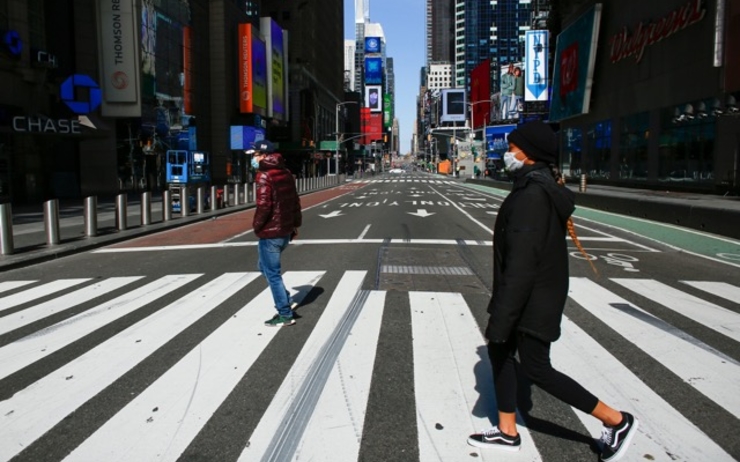Although governments timidly announce that the famous peak of the epidemic may have been reached, the number of confirmed Covid-19 patients continues its upward course. Disturbingly, New York City, which has 8.5 million people, has almost as many cases as France, which has 67 million people.
An edifying comparison
According to the latest figures from the benchmark Johns Hopkins University, New York City alone has to date 141,235 confirmed cases of covid-19 and has nearly 15,000 deaths. The United States, the most affected and bereaved first country in the world, has nearly 800,000 confirmed cases and 40,000 deaths. But it is the relationship between the city of New York, which has 8.5 million inhabitants and France – 67 million inhabitants – which is striking, since both the city that never sleeps and the Hexagon count almost the same number of confirmed covid-19 cases. 141,000 for New York and 154,000 for France which deplores 20,000 deaths, 5,000 more than New York City.
In New York State, which has 19 million inhabitants, nearly 620,000 people have been tested compared to 365,000 in France, according to the latest epidemiological bulletin from Public Health France dated April 16. Here again, a disturbing figure.
The density of New York City and therefore the proximity between residents, is undoubtedly an element that explains the spread of the new coronavirus. Dr Anthony Fauci, a key member of the White House coronavirus task force, said last week that the total number of Americans who will die from Covid-19 in the outbreak “instead stands at 60 000 ”. At the end of March, Dr Fauci estimated that between 100,000 and 200,000 could die.
The projection of 60,000 would be the upper estimate of the total number of flu deaths in the United States between October 2019 and March 2020, according to government data. But Vice President Mike Pence pointed out on the same day that Covid-19 is about three times more contagious than the flu.
Screenshot taken on April 20 at 4 p.m.
A social disparity
When the pandemic was announced, the wealthiest population left New York. The others stayed. In early April, New York City Hall released data showing that affluent Manhattan neighborhoods have far fewer cases of Covid-19 than poorer neighborhoods. Of the twenty neighborhoods with the least contamination, nineteen are in fact located in areas of Manhattan where the average salary is very high.
Local news site Patch.com noted a strange coincidence in the distribution of the disease: The neighborhood with the most coronavirus cases, located in Queens, is called Corona. On average, 9 in 1,000 people there are infected with the virus, compared to 5 in 1,000 city-wide and 2 in 1,000 in some affluent neighborhoods in lower Manhattan.
Next to Corona, the neighborhoods of Elmhurst and Jackson Heights are also particularly affected. In this part of New York, about 80% of the population is of Hispanic or Asian descent.
In the most disadvantaged neighborhoods, many families live together in small spaces. In addition, these neighborhoods concentrate many people working in restaurants, construction, maintenance services or home help, jobs that make social distancing more difficult.
Similarly, a high rate of contamination was observed in Brooklyn, in the neighborhoods where ultra-Orthodox Jewish communities live. also have a large number of Covid-19 cases, because the population density is very high and social distancing measures have been slow to be adopted. This remains an observation. It is clear that all neighborhoods are affected, certainly not in the same way and no one is spared.
In France
As France begins its sixth week of confinement, Monday April 20, the epidemic caused by the new coronavirus remains “very deadly”, warned the director general of health, Jérôme Salomon, announcing that the number of deaths now exceeds 20,000.
The epidemic has now killed “more than all seasonal flu epidemics, even the most severe, even the longest,” and the 2003 heatwave, which killed 19,000, compared Solomon.
In France, Emmanuel Macron announced a gradual deconfinement from May 11 while Andrew Cuomo, governor of the State of New York extended, last week, the confinement, or rather the “break” until May 15 .
–


